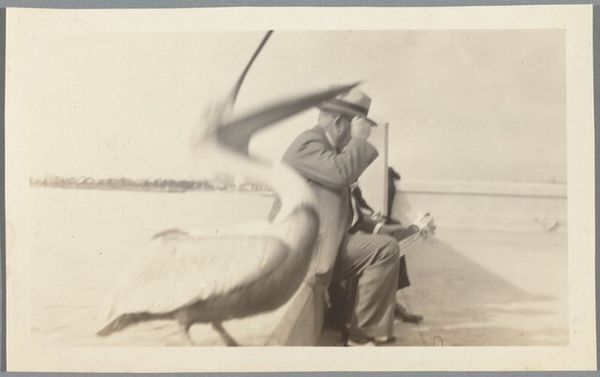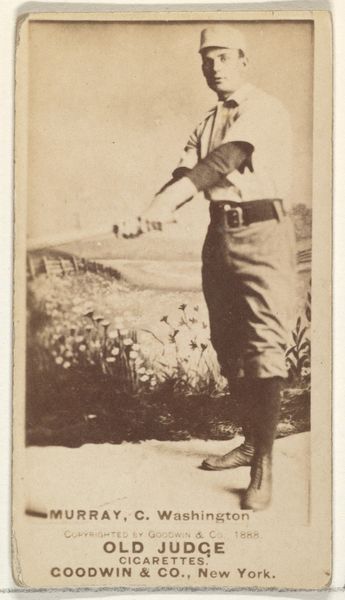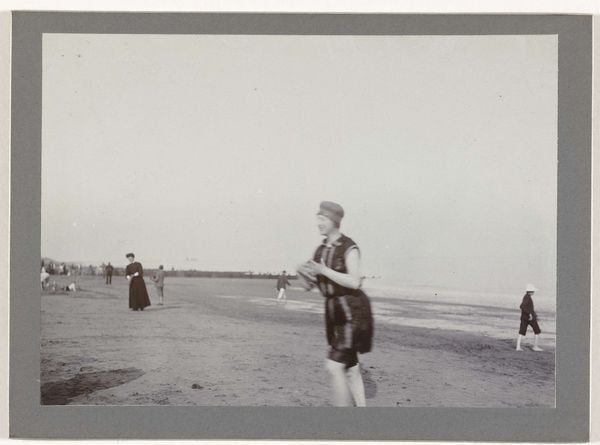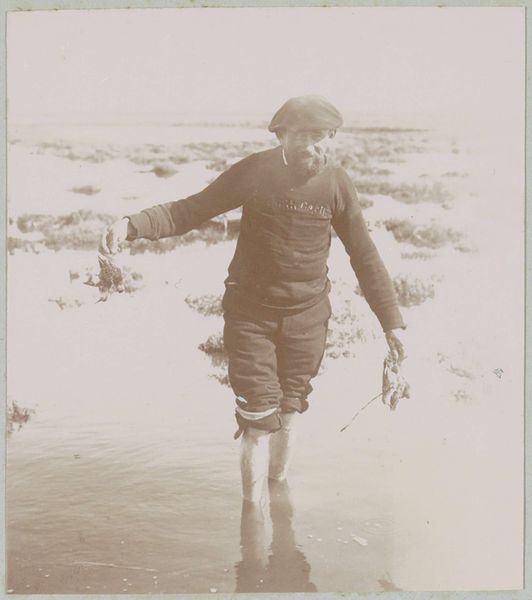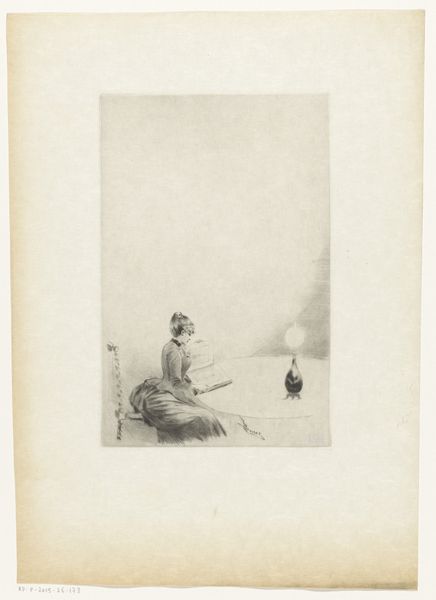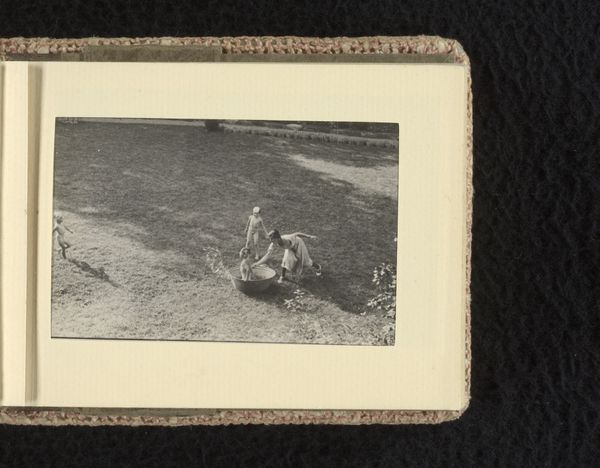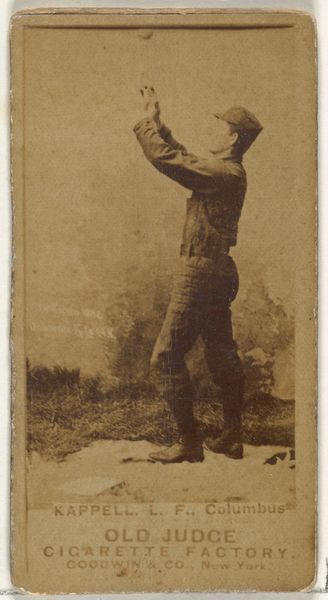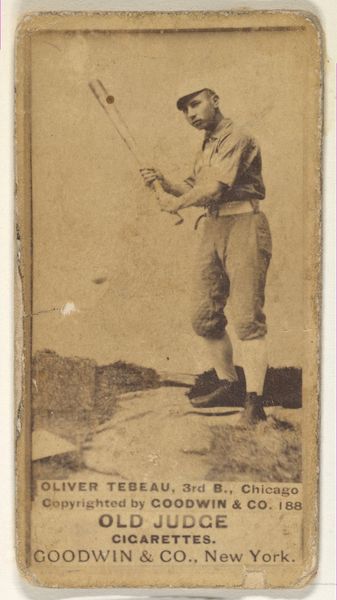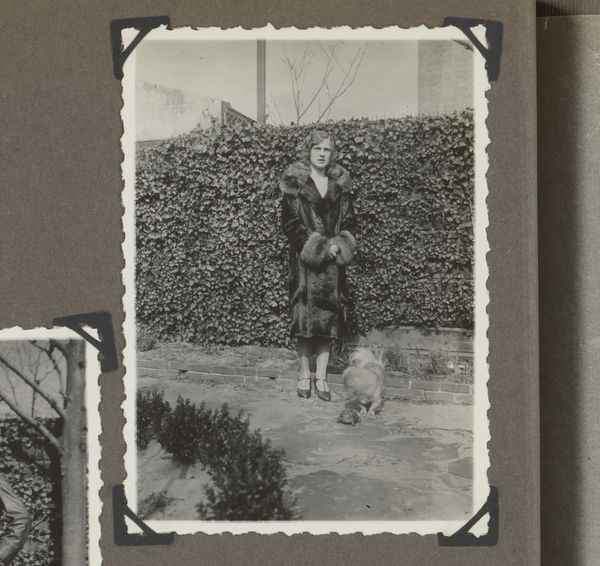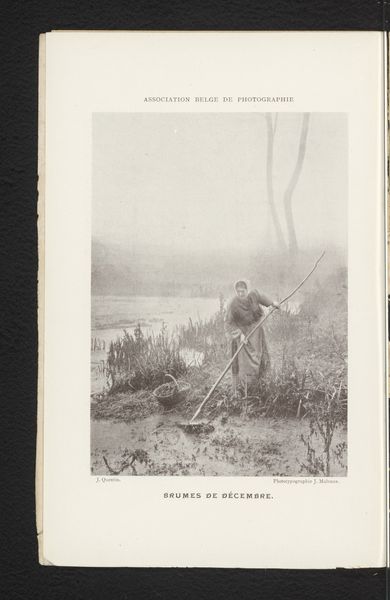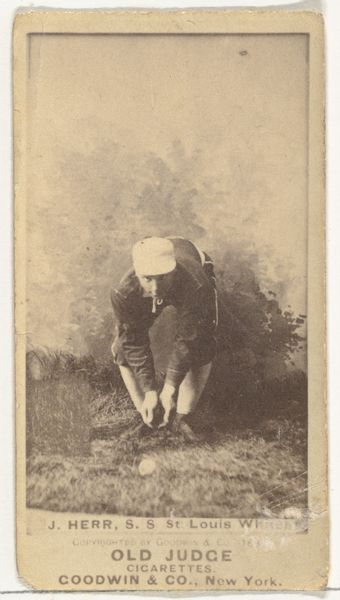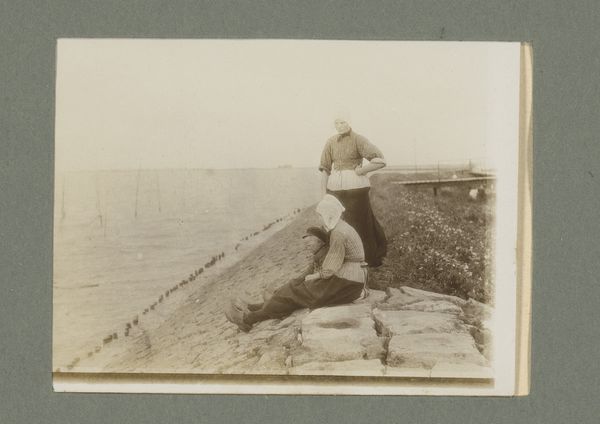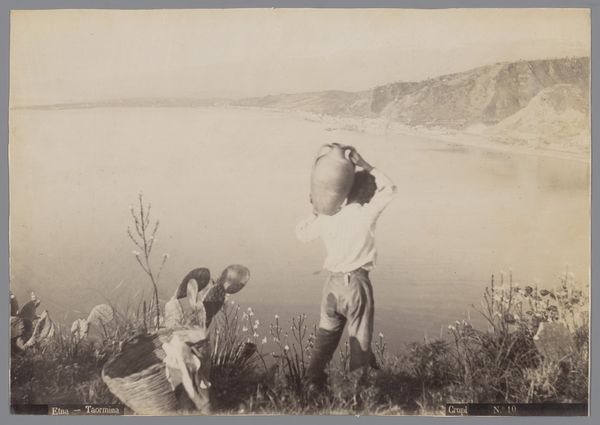
photography, gelatin-silver-print
#
portrait
#
landscape
#
social-realism
#
archive photography
#
photography
#
gelatin-silver-print
#
history-painting
#
realism
Dimensions: height 9 cm, width 6.5 cm
Copyright: Rijks Museum: Open Domain
Curator: Here we have an intriguing gelatin silver print, "Een Wehrmacht soldaat bij de zee," or "A Wehrmacht Soldier by the Sea," made sometime during the Second World War. It resides here at the Rijksmuseum. Editor: My first impression is one of starkness and melancholy. The pale, bleached tones of the print enhance this sense of isolation. The figure is quite small against the vast, indifferent expanse of the sea and sky. Curator: Indeed. The image evokes the occupation era with unflinching clarity. It speaks to the normalized presence of the Wehrmacht in Dutch society and the psychological effect on the local population, almost blending into the landscape, in a way. Editor: And yet, he's not alone. He is posed here with his dog, almost a sentimental touch that softens the cold military posture. This juxtaposition complicates the narrative, introducing a layer of relatable humanity, which may cause different reactions with a contemporary audience. I would wager this specific man represents larger ideas. The helmet... the gun... dog as companion... Curator: You raise an important point about symbolism. The dog could be a symbol of loyalty, of course, or domesticity contrasted with military duty. Wehrmacht soldiers in this region played complex roles; the Netherlands were occupied by Nazi Germany from 1940-1945, deeply impacting the daily lives and social structures, and changing cultural perceptions for decades after the war. Photographs like these are historical artifacts loaded with meaning and continue to fuel debates. Editor: It makes me think about power, vulnerability, and complicity, even innocence lost. The vast beach looks on, almost unaware of human conflict playing out against it. Even the gelatin silver gives it the feeling of an unearthed memory, one which can degrade over time. Curator: Absolutely, the fragility of the photograph itself mirrors the fragility of peace and stability, a poignant reminder for viewers today. Editor: Indeed. This photo invites us to contemplate the myriad layers of historical and cultural context of World War Two. Curator: Precisely. And considering its location now within the Rijksmuseum allows us to continuously re-examine and reinterpret its narrative.
Comments
No comments
Be the first to comment and join the conversation on the ultimate creative platform.
